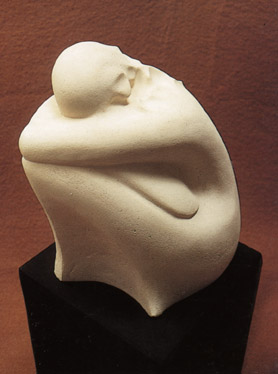The course of death-related ideas and beliefs is one thing, the sculpting of them is another. In the span of funerary art models reported by History, one turns a lesser attention to doctrines and ideologies than to their tangible transcription in art. One’s attention is not so much held by the Latin message of the Requiem than by the admirable way in which Mozart rendered it, or the way in which Fauré has transliterated the same Latin message in music. It is the tympanum of the Vezelay basilica or of the Autun cathedral, or else, the Sistine Chapel or baroque ceilings that make our faith responsive to the Last Judgment.
We admire the genius-, sensitiveness-, creativity-pervaded, the humane and profane way … in which sculptors, through generations and regions, have dared transcribe their contemporaries’ death-related beliefs. There is no choice but to admit that they gave it their all and best, what was most personal and decisive in them, innovating and breaking new ground … So much so that, in the end, our legacy today lies in the outside of dogmas (e.g. of the Latin of the Requiem), and, instead, in the tangible and eloquent tradition of sculpture. Sculpture has brought modernity to the mind.
(Translated by Michèle Bustros)
WOMAN IN MEDITATION
h.45cm 1995
|

|